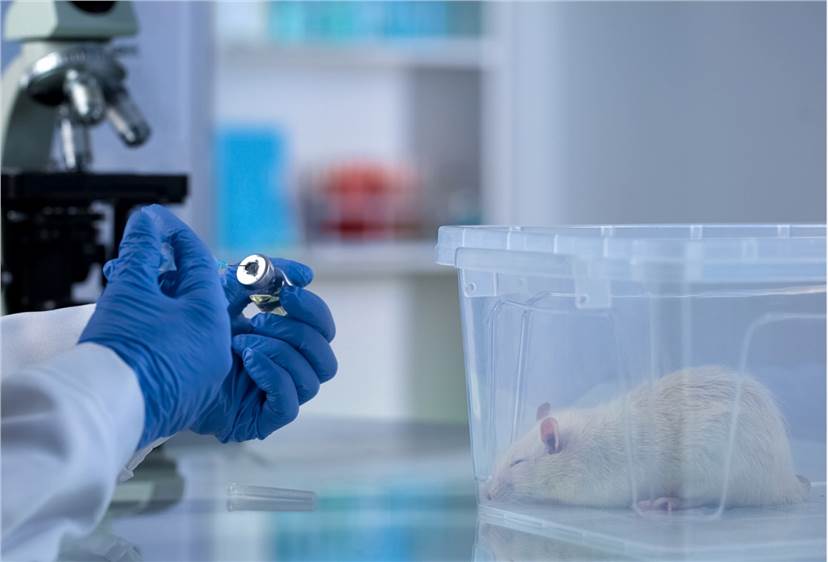Short-term repeated inhalation toxicity is defined as the health effects caused by repeated inhalation of a subject over a period of time shorter than 10% of the life span of the experimental animal.
Our company provides professional short-term repeated dose inhalation toxicity (28 days) testing services to help customers understand the inhalation toxicity characteristics and dose-response relationships of test samples and to obtain information on toxicity characteristics, target organs, whether the sample is accumulative toxicity, no-observed-adverse-effect level (NOAEL), lowest-observed-adverse-effect level (LOAEL), etc., to provide a basis for the selection of dose and observation indicators for other toxicity tests.
Test Range
Veterinary drugs, pesticides, chemicals, fungicides, organic toxicants, solid waste, domestic waste leachate, hazardous waste, sewage, sludge, water quality, surfactants, etc.

About Short-term Repeated Dose Inhalation Toxicity Service
Test Method
Our company prepares the test samples into specific concentrations of gas, vapor, aerosol or granular suspension, and repeatedly poisoned the experimental animals for 28 days with a dynamic poisoning system to observe the animals' poisoning response.
The dynamic poisoning system uses mechanical ventilation to continuously and uniformly deliver air containing a certain concentration of test samples to the poisoning cabinet to maintain a relatively stable concentration of poisoning.
We regularly weigh and calculate the feeding amount, and perform the determination of hematological indexes, biochemical blood indexes, histopathological detection indexes, etc., to evaluate the short-term repeated inhalation toxicity of the test samples and to initially determine the dose and target organs of the samples causing harmful effects in animals.
Subjects
- The gaseous sample is mixed with air by the flowmeter to a certain concentration and then directly transferred to the poisoning cabinet.
- The liquid sample with a low boiling point and easy to volatilize is bubbled by air or heated appropriately to promote its volatilization, then mixed with air and passed into the dye cabinet.
- High boiling point non-volatile liquid samples can be selected from the spray method, or the use of aerosol devices to prepare liquid aerosols and then mixed with air.
- Powdered or solid samples are made into solid aerosols using aerosol-generating devices, then mixed with air and passed through the dye cabinet.
Test Animals
We preferred healthy, primiparous adult rats, no older than 9 weeks of age. Individual animal weights should not differ by more than ±20% of the average weight of the same sex. At least 10 rats of each sex were used in each group, half of them male and half female. Females should be non-pregnant and unborn.

Test Observations
- Clinical observations: Changes in skin, coat, eyes, and mucous membranes, changes in the respiratory system, circulatory system, nervous system, limb movements and behavioral patterns.
- Body weight and food intake were recorded.
- Hematological examination: Hemoglobin concentration, red blood cell count, hematocrit, total leukocyte count and classification, platelet count, coagulation function (prothrombin time and activated partial suspicion activation time).
- Blood biochemical examinations: Electrolyte balance, carbohydrate metabolism, liver function, special function, etc. The test index should include at least alanine aminotransferase (ALT), aspartate transaminase (AST), alkaline phosphatase (ALP), blood urea nitrogen (BUN), creatinine (Cr), blood glucose (GLU), albumin (ALB), total protein (TP), total cholesterol (TCH), potassium, and sodium.
- Urine examination: appearance, specific gravity, acidity, urine protein, glucose and blood cells, etc.
- Pathological examination: Gross anatomical examination and histopathological examination.
Short-term Repeated Dose Inhalation Toxicity Test Report
The final test report Our company provides includes the following.
- Test name, test start, and end dates, etc.
- Test summary.
- Specific information on the name of the test sample, physical and chemical properties, solvent, preparation method, etc.
- Specific information on the experimental animals and laboratory animal facilities.
- Dose and group: The principle or basis for choosing the dose, the dose and group, the way the animals are grouped, and the number of animals of each sex in each group.
- Infection method: Main instruments and equipment, route of infestation, infestation protocol, test period, observation index, etc.
- Test results: Clinical signs of poisoning, changes in body weight, gross anatomical and histopathological changes, etc.
- Test conclusion: The toxic effect of the test sample and the conclusion of the toxic effect on the target organ, as well as NOAEL and LOAEL.
If you are looking for the best solution in the field of toxicology research, please feel free to contact us.
Related Solutions
It should be noted that our service is only used for research, not for clinical use.


